


Muscat’s Mosques and Palaces: Sultan Qaboos Grand Mosque, Alam Palace, Royal Opera House
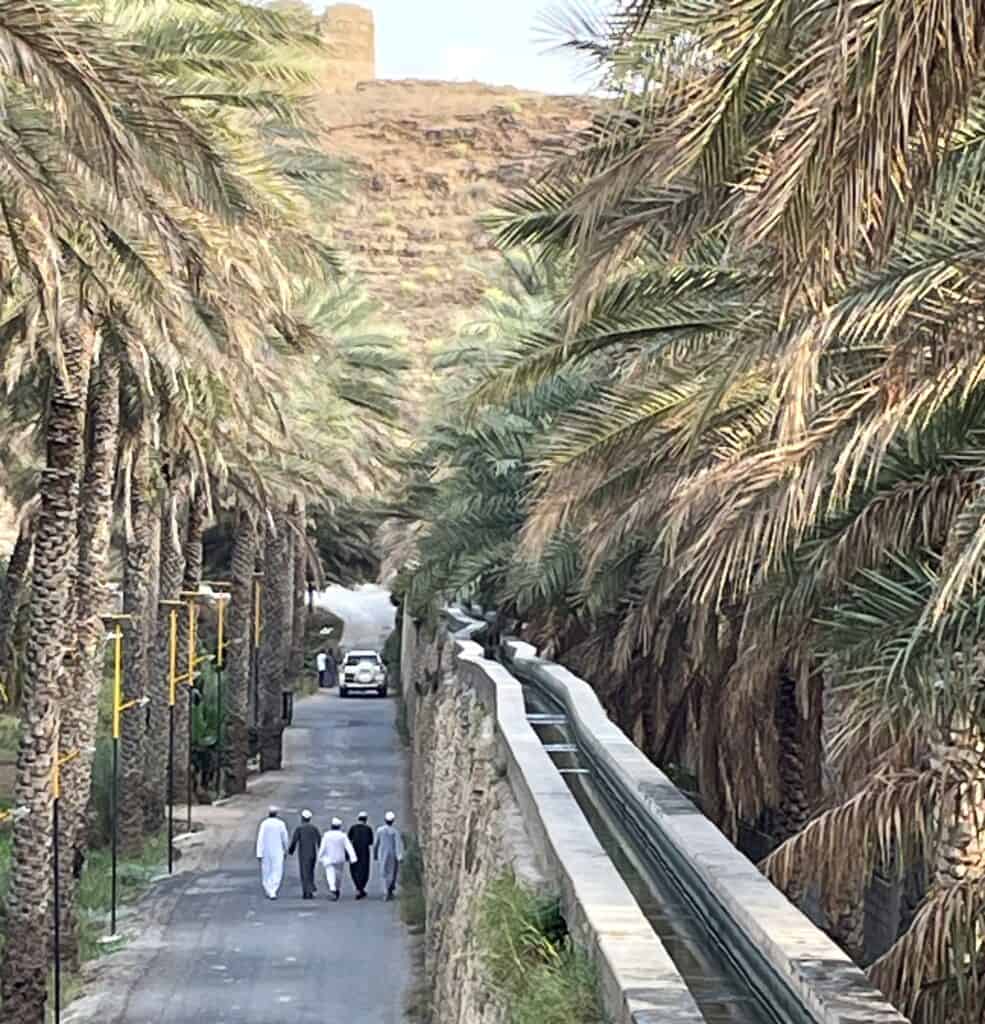
Forts, Oases, and a Fabulous Museum: Birkat al Mouz, ‘Oman across Ages’ Museum, Nizwa Fort.

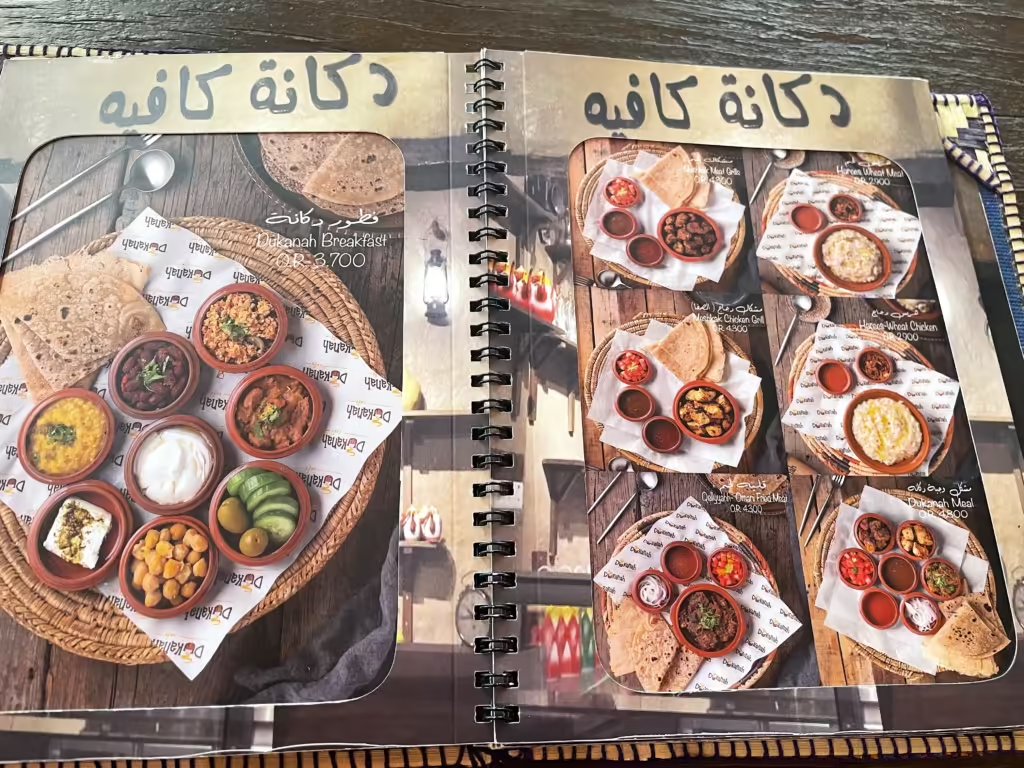
After spending the second night in Muscat, head to Dukanah Cafe for breakfast. This is a beautifully designed eatery that feels like stepping into an old Omani house. Mud-brick walls, wooden beams, and traditional seating create an atmospheric beginning to your cultural day.
Try this: The Dukanah Breakfast – a generous platter of Omani favourites like shakshuka, lentils, cucumber salad, dates, and fresh cream, served with warm bread. Don’t skip the cardamom-spiced Omani coffee. One of my all time favourites is ‘Quroos’ which are tiny pancakes served with date syrup and are simply ‘Yum’!
🗺️ Tip: It’s located in Al Ghubrah South, about a 10-minute drive from Sultan Qaboos Grand Mosque. You can easily park nearby.
If you want more information about Dukanah Café, read my full review.
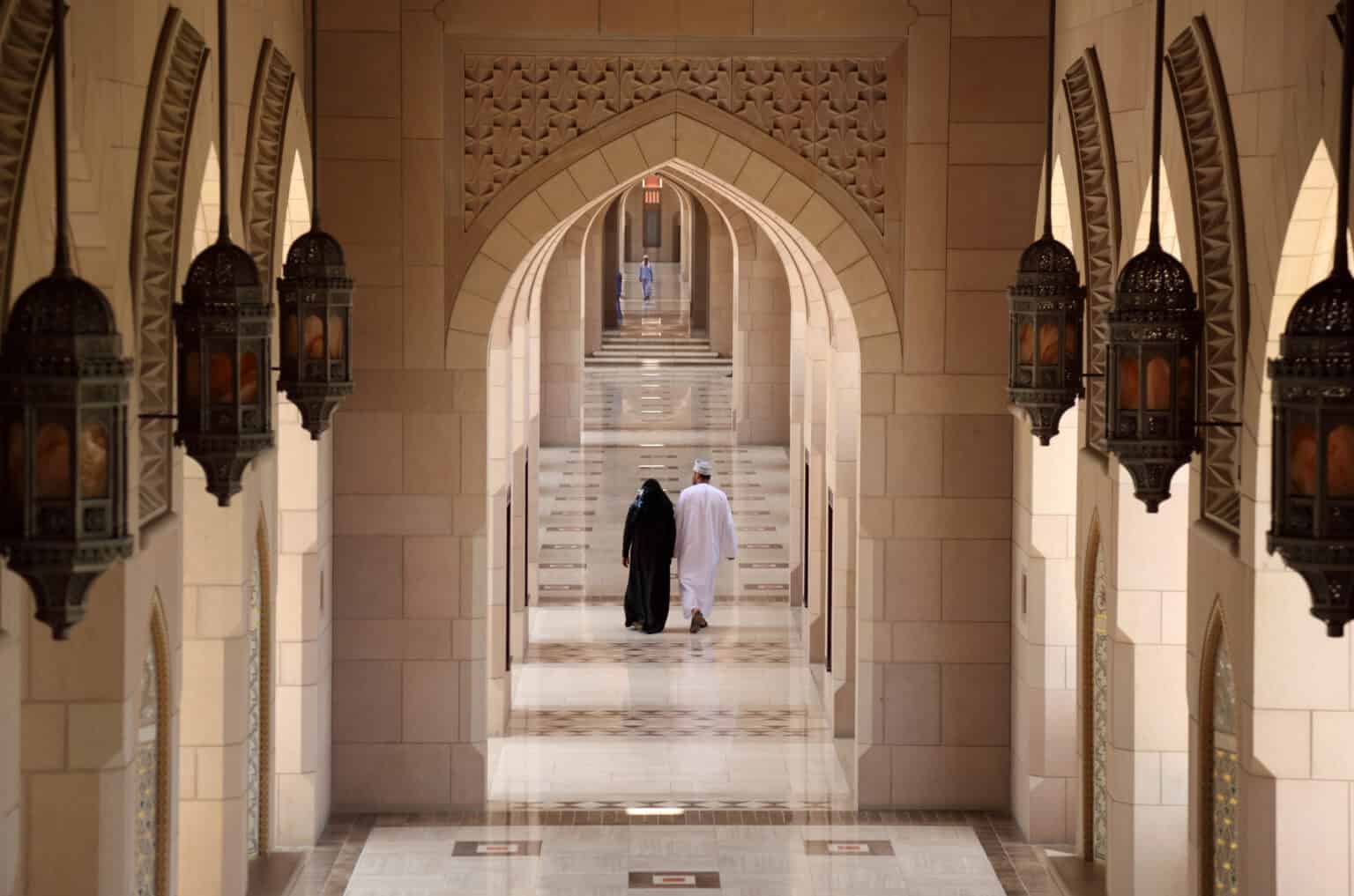
After breakfast, make your way to the Sultan Qaboos Grand Mosque, one of the most important landmarks in Oman. It’s open to non-Muslim visitors from 8:00 AM to 11:00 AM, Sunday to Thursday, and it’s well worth planning your morning around.
This isn’t just a quick photo stop. It’s a chance to slow down and take in the details. The mosque is a Masterpiece: vast and breath-taking, with beautiful clean lines and marble. It was opened in 2001. It has 5 minarets reperesenting the 5 pillars of Islam. The main prayer hall has one of the largest handwoven carpets in the world (it comes from Iran and weighs 21 tonnes!) and an enormous crystal chandelier that hangs overhead – with 34 smaller chandelliers handing around the room. It’s quiet and calm inside, and even if you’re not religious, you can’t help but feel the sense of peace here.
Main prayer hall: Men can enter this area freely. Women are also welcome but must be fully covered.
Women’s prayer hall: Smaller but open to all visitors. It’s worth stepping inside.
Library and Islamic Centre: You’ll find books, pamphlets, and often someone friendly to answer questions.
Gardens, Verandas and courtyards: Take time to walk around if it’s not too hot. You’ll notice that the construction style of the verandas offers a sense of cool even if there’s no air-conditioning.
Women: You’ll need to cover your hair, arms, and legs. I recommend wearing a long-sleeved top, loose trousers or a maxi skirt, and bringing a scarf (it’s more hygienic!).
Men: Should wear long trousers and a sleeved shirt or t-shirt.
If needed, abaya rentals are available near the entrance for around 2 OMR.
Bring a bottle of water—you’ll be walking quite a bit outdoors between halls and courtyards.
Remove your shoes before entering the prayer halls. You’ll find shelves provided.
Photos are allowed
The bathrooms and ablution areas are open to visitors and very clean.
If you’re interested in the architecture, take a few minutes to look at the tilework and arches up close. The building combines traditional Islamic design with Omani touches, and it’s all been done with great care.
I’ve visited this mosque multiple times and it never feels the same twice. Sometimes it’s the light, sometimes it’s the silence, sometimes it’s the way a visitor next to you suddenly pauses to look up and take it all in.
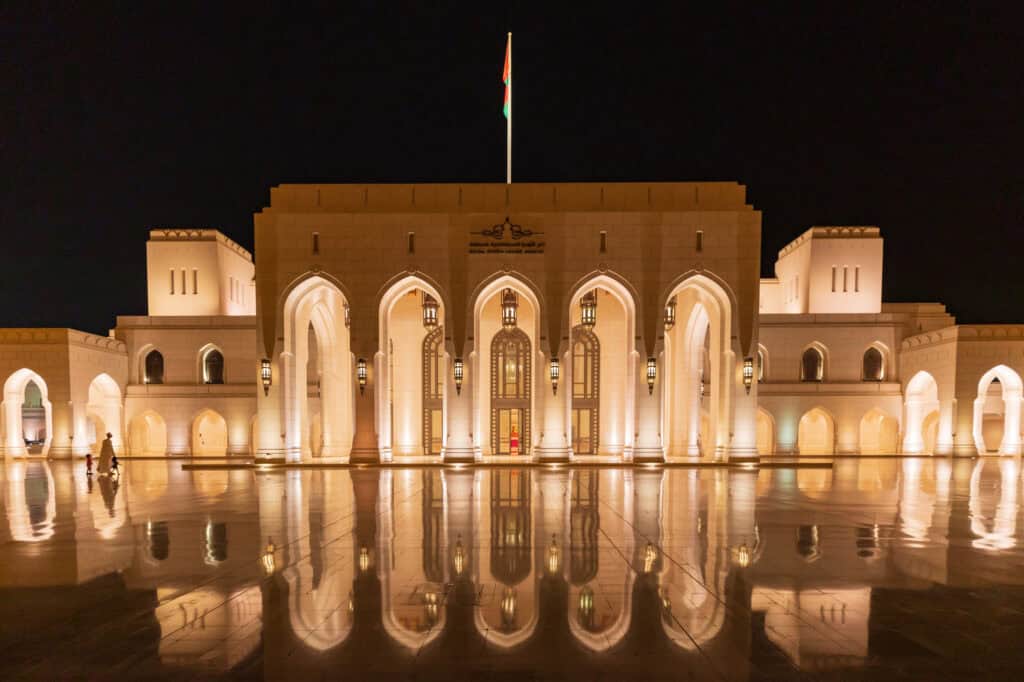
Not far from Sultan Qaboos Grand Mosque is the Royal Opera House. Once again, it is a stunning building. It was built in 2011 and beautifully combines Islamic and Italian architectural features. Some people or websites will advise you to do a guided tour. However, my experience was that we paid for an 8 minute tour (literally! We actually timed it). As a result, I would suggest that you attend a show in the evening if there is a performance on. This will allow you to also see the elegant lobby and grand hall with ornate balconies from the inside.
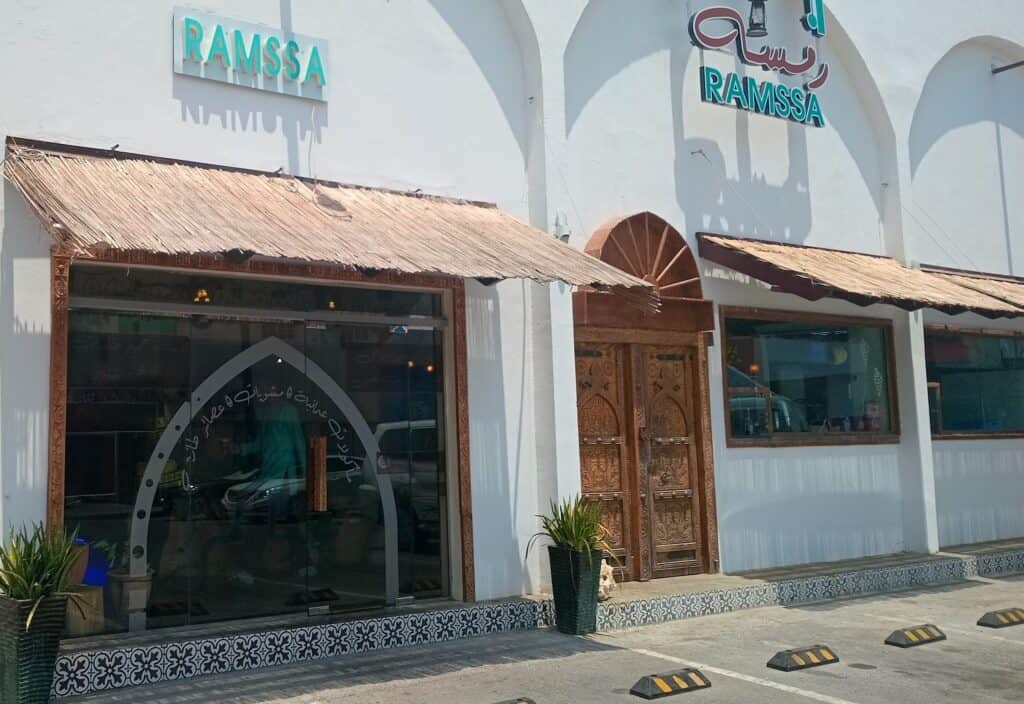
After exploring the mosque, you might be ready for a lunch break. Luckily, there are some excellent Omani restaurants nearby that offer a taste of both traditional and modern flavours.
You have two excellent options depending on your mood. Ubhar Restaurant offers a modern twist on classic Omani flavors, with dishes like Shuwa wraps and the surprisingly refreshing frankincense ice cream – a great choice if you want to try Omani food with a creative edge.
Alternatively, Ramssa Omani Restaurant delivers a more traditional experience, with a cozy, heritage-inspired setting and a menu focused on authentic Omani dishes like Majboos and grilled mishkak, perfect for those looking for a truly local taste. See my full review of Ramssa Omani Restaurant.
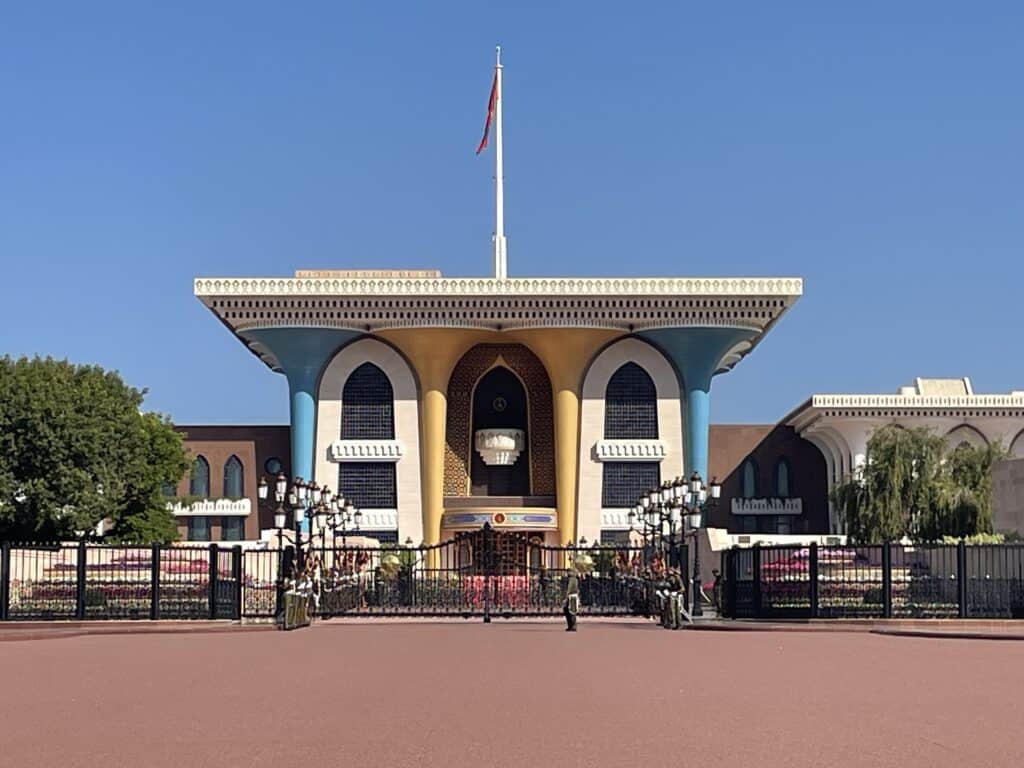
Al Alam Palace, one of the six residences of His Majesty the Sultan, stands as a symbol of Oman’s deep-rooted heritage and modern aspirations.
The first time I saw the palace palace, I was struck by its blue and gold facade. It offers a flamboyant example of contemporary Islamic architecture and reflects the country’s respect for tradition while also including some elements of modern design.
In my experience, the optimal time to visit Al Alam Palace is in the afternoon, around 3:30 PM. This timing will allow you to experience the palace’s striking blue and gold façade under a warm light. This will make for great photographs!
You can’t enter the palace itself but the grand courtyard and beautiful arches nearby are well worth a walk around. I always enjoy seeing the great care given to the surrounding gardens. The palace is flanked by the historic forts of Al Jalali and Al Mirani, which once protected Muscat’s old harbour and played a critical role in the city’s defense against foreign invaders.
As you stand in front of the palace’s polished marble columns, take a moment to appreciate the blend of history and modernity.
Historic Note: The Al Jalali Fort was Oman’s main prison in the 20th Century until the 1970s.
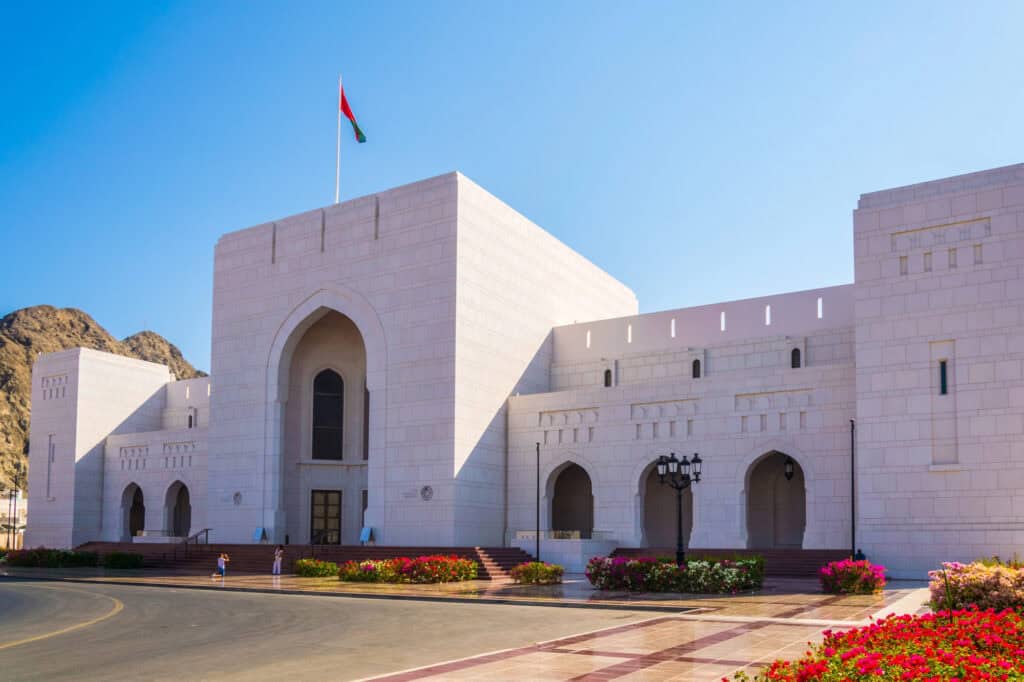
The National Museum was opened to the public in 2016 and is located opposite Al Alam Palace. If you’re visiting Oman for the first time, this is definitely a must-see.
In my experience and based on a discussion with one of the guides, it’s best to start by watching the documentary called ‘Oman: The Jewel of the East in the Land of Hope.’ It is projected (in English and in Arabic) in the museum’s AV Theatre on the ground floor and will give you a beautiful immersive introduction to Oman’s history and heritage. Well worth it in my opinion!
During your visit, don’t miss the ‘Sinaw Treasure’ – a hoard comprising 962 silver dirhams dating back to the Sasanian and early Islamic period. It’s actually the largest coin hoard unearthed in Oman to date and points to Oman’s pivotal role in early trade networks!
You should also see the reconstruction of a Bronze Age Beehive Tomb. These tombs, dating back to the 3rd millennium BCE, are emblematic of Oman’s ancient burial practices.
Interesting fact: The National Museum of Muscat was the first museum in the Middle East to incorporate Arabic Braille script throughout its exhibits
Location: As-Sa‘idyyah Street
Ticket Prices:
Omani citizens and GCC nationals: 1.000 OMR (with valid ID)
Residents: 2.000 OMR (with valid resident card)
Tourists: 5.000 OMR
Free entry is available for:
Senior citizens (60 years and above)
Children under 6 years old
Students up to 25 years old (with valid ID)
Organized school and university visits
Saturday to Thursday: 10:00 AM – 5:00 PM
Ticket desk closes at 4:30 PM
Friday: 2:00 PM – 6:00 PM
Ticket desk closes at 5:30 PM
Option 1: A dhow cruise along Muscat’s coastline is a beautiful way to end your second day in Oman.
Departing from Marina Bandar Al Rowdha, these traditional wooden boats will take you past the cliffs and the serene bays of Muscat as the sun sets over the water. Marina Bandar Al Rowdha is about 5 to 10 minutes driving distance from the National Museum.
Most cruises last around 2 hours and typically include a buffet dinner and refreshments. Prices start at around 20 OMR per person, with evening departures usually around 5:30 to 6:00 p.m. It’s a relaxed, scenic way to soak in the coastal views and watch the city lights come to life.
🗺️ Travel Tips:
Arrive early to find your boat and enjoy the views from the marina itself.
Dress in light, comfortable clothing as it can be warm in the evenings.
Bring a light jacket if you’re visiting in the cooler months, as the sea breeze can be surprisingly brisk.
For more information, check out: Star of The Sea Oman
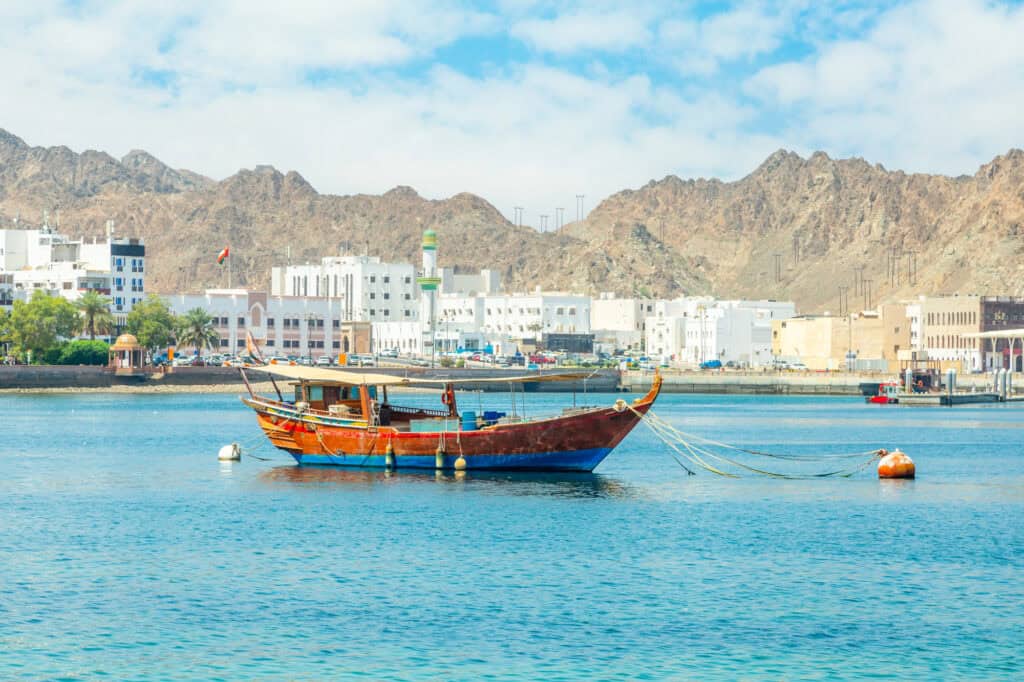
Option 2:
Another suggestion is attending a performance at the Royal Opera House if there is a show. Located in the Shati Al Qurum district, the Opera House showcases a diverse array of performances, including opera, ballet, and classical concerts, with evening shows typically starting between 7:00 and 8:00 p.m. Ticket prices vary depending on the performance and seating selection.
To complement your evening, you might consider dining at Al Angham, situated within the Opera Galleria complex. This fine-dining restaurant offers another chance to have an Omani culinary experience, featuring traditional dishes such as shuwa (slow-cooked marinated lamb) and jareesh (cracked wheat stew) Please note that Al Angham is an alcohol-free restaurant and does not accommodate children under six years old.
For the latest performance schedule and to make reservations, you can visit the Royal Opera House Muscat’s official website rohmuscat.org.om